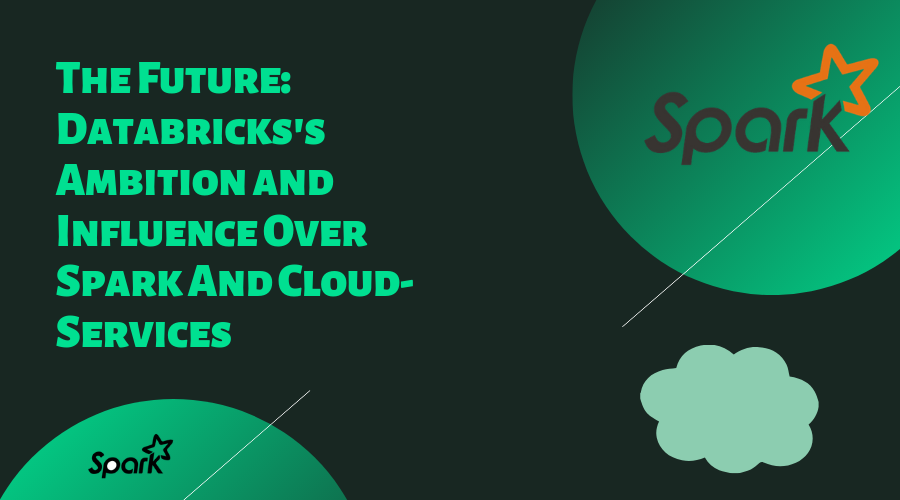Over the past few years, most of the industry reports, market signals, expert opinions, global trends, technology-related debates, and many more across the world are hinting at only one direction – “The adoption of Apache Spark is on the rise”.
The community of Spark is growing exceptionally and most of the prominent platforms of big data are simplifying their complex processes to leverage Apache Spark and attempting to deliver efficient analytics that provides valuable insights for their client’s businesses. The cutting-edge features of Apache Spark -Hadoop integration overpowers prominent cloud vendors, namely, Hortonworks and Cloudera along with multi-skilled powerhouses like Microsoft, IBM, and Facebook.

The world’s largest big-data, as well as machine learning conference, takes place annually in Europe, which is an exclusive “one-stop-shop” for program developers, data scientists, data engineers, tech executives, as well as decision-makers to find out about the latest advancements, applications, and tools in the fields of big data, artificial intelligence, and machine learning.
The sessions, as well as training programs of this prestigious conference, cover a wide array of in-depth subject matters such as AI, data science, Python & advanced analytics, deep learning techniques, technical deep dives, data engineering, and Apache Spark Services, use cases.
The following are some of the key topics that have been discussed during the recent conference concerning Apache Spark – the first-ever unified analytics engine that offers cloud-based big data analytics solutions and Databricks – the firm established by the developers of Apache Spark.
Databricks Delta: Smart Cloud-Backed Data Management System
Recently, Databricks extended its product portfolio by adding a new perk: Databricks Delta. Built on top of Apache Spark, Databricks Delta is considered a next-Gen unified analytics engine and is geared towards assisting data engineers to simplify the complex-natured large-scale data management process.
At present, most businesses set up their big-data architectures by combining numerous data lakes, data warehouses, and streaming systems, which significantly increases the complexities and costs associated with system integration and maintenance. The most advanced Databricks Delta offers a single data management platform – unified with data lake’s scalability, data warehouse’s functionality, & reliability, and low latency live streaming within an integrated system.
Supported by other versions of the Databricks Unified Analytics Platform, this application greatly simplifies the building, managing, and migrating of data applications. Businesses can integrate Databricks and solutions with the Spark core engine in general together with Scala developers for hire.
Apart from this, Databricks Delta also acts as a smart transactional storage layer that can be placeable onto the AWS S3 bucket and facilitates data processing on a large scale across the cloud platform. As claimed by the parent firm, Delta is an integrated cloud-backed platform that offers outstanding scalability and elasticity by permitting the amalgamation of streaming, data warehousing, batch processing, and machine learning.
Building A Data Warehouse On Spark Platform And Evaluating Its Functionality
The high demand for data warehouses which offers high-level benefits in terms of governance and performance, and smooth data migration from data lakes to data warehouses and vice versa, motivated Databricks to invest a considerable amount of resources in this field. Even though cloud-based Spark is not a new concept in the world of big data, Databricks brought the Delta application to the forefront by adding ACID transactions and scalable metadata into its already existing Unified Analytics Platform.
Regarded as the most important component – metadata is accountable for most of the tasks that take place within the hood of Delta with the support of automation and/or machine learning such as schema matching, data compaction, serverless deployment, and statistical query optimization. The schemas ensure the validation of data that enters Delta, which is the most crucial feature for any data warehouse. Although the present format of storage is under proprietorship, however, as per Databricks, it will soon be transformed into an open source.
The demand for cloud-backed Spark and cloud-computing solutions is sky high
According to the official sources of Databricks, there is more demand for their cloud-based products in comparison to the on-premise as well as open-source products since Delta can smoothly work along with HDFS. Most of the firm’s innovations are associated with Spark, where the codebase will be initially tested for cloud configurations and later incorporated into Spark with certain necessary modifications.
Indicating that short iterations are key reasons for its intensive focus on Spark as against on-premise, Ali Ghodsi – the CEO of Databricks said, “With on-premise software, you need to wait for some 2 years from the moment you implement something till you roll it out and get feedback – it’s like flying blind: it has to be included in the next version, sales have to sell, professional services has to upgrade, and then you may hear whether people are happy using the software or not. We now have 2-week sprints and upgrades are done in no time.”
Databricks named a strong performer in Insight Platforms-as-a-Service
Databricks – the biggest contributor in the field of big-data platforms, brought several significant components into Spark to assist several teams that are working with big data to acquire valuable insights, including proprietary extensions as well as Insight Platform-as-a-Service.
At the same time, there is substantial competition among the cloud-service providers and each of these players offers its mechanism for the processing of data within the cloud. For instance, Qubole offers Map-Reduce job optimization, Hive, and various managed versions allied with Spark which are currently not included in Databricks offerings.
Also, a few other platforms such as Flink/data Artisans, Kafta/Confluent, Splice Machine, and SnappyData offer some alternatives for Spark’s features.
What’s The Next Move Of Databricks
As declared by Databricks, the firm is presently working on deep learning and streaming – the two fastest-growing domains of big data. The firm aimed to build a multi-functional API to facilitate both batch and streaming data processing.
Furthermore, Databricks planning to develop end-to-end solutions to achieve a competitive advantage and survive for a long time in the ever-evolving world of technology.
